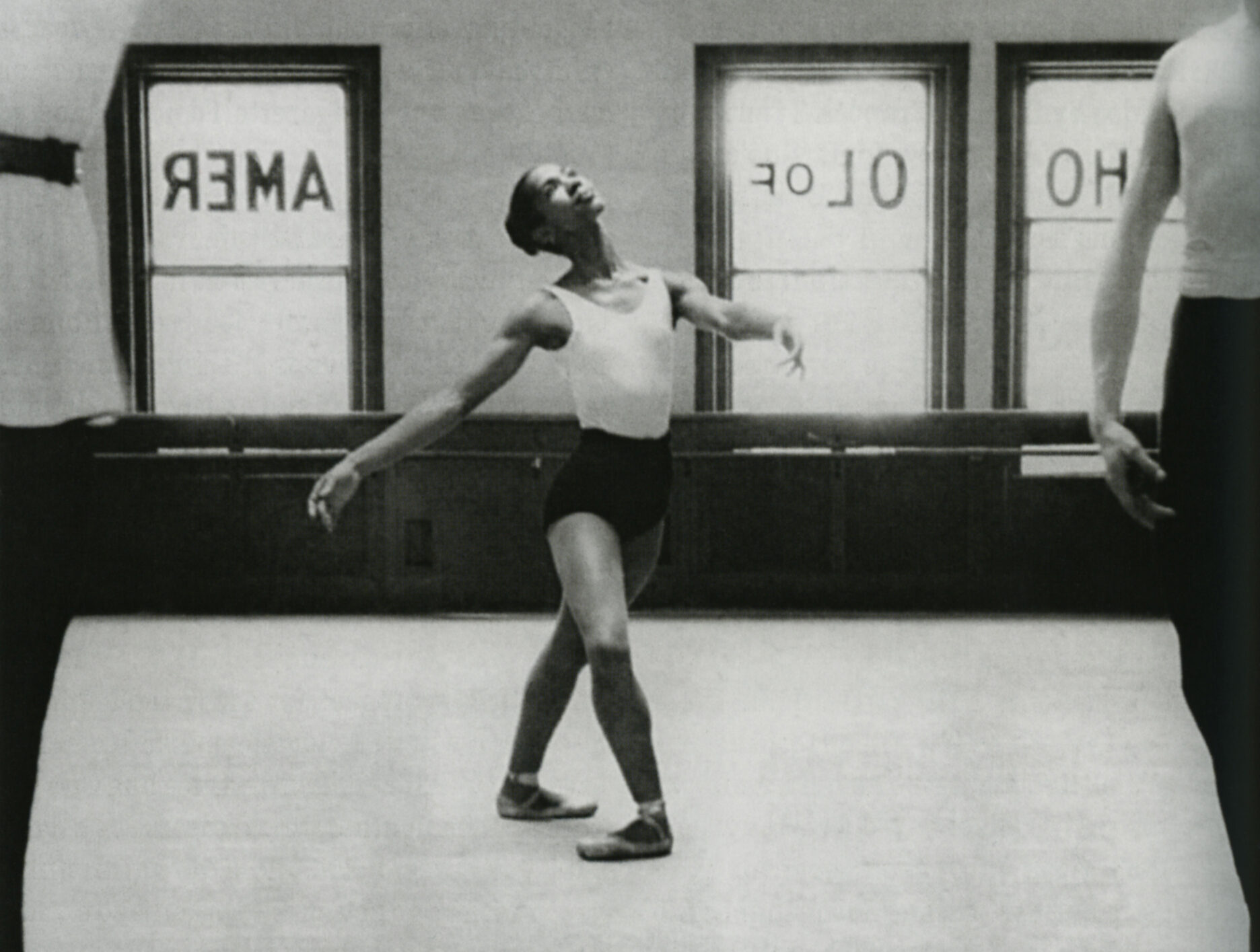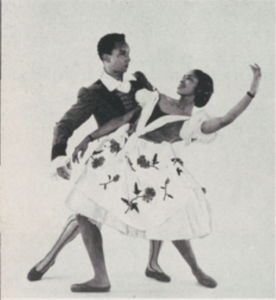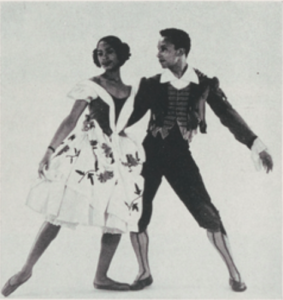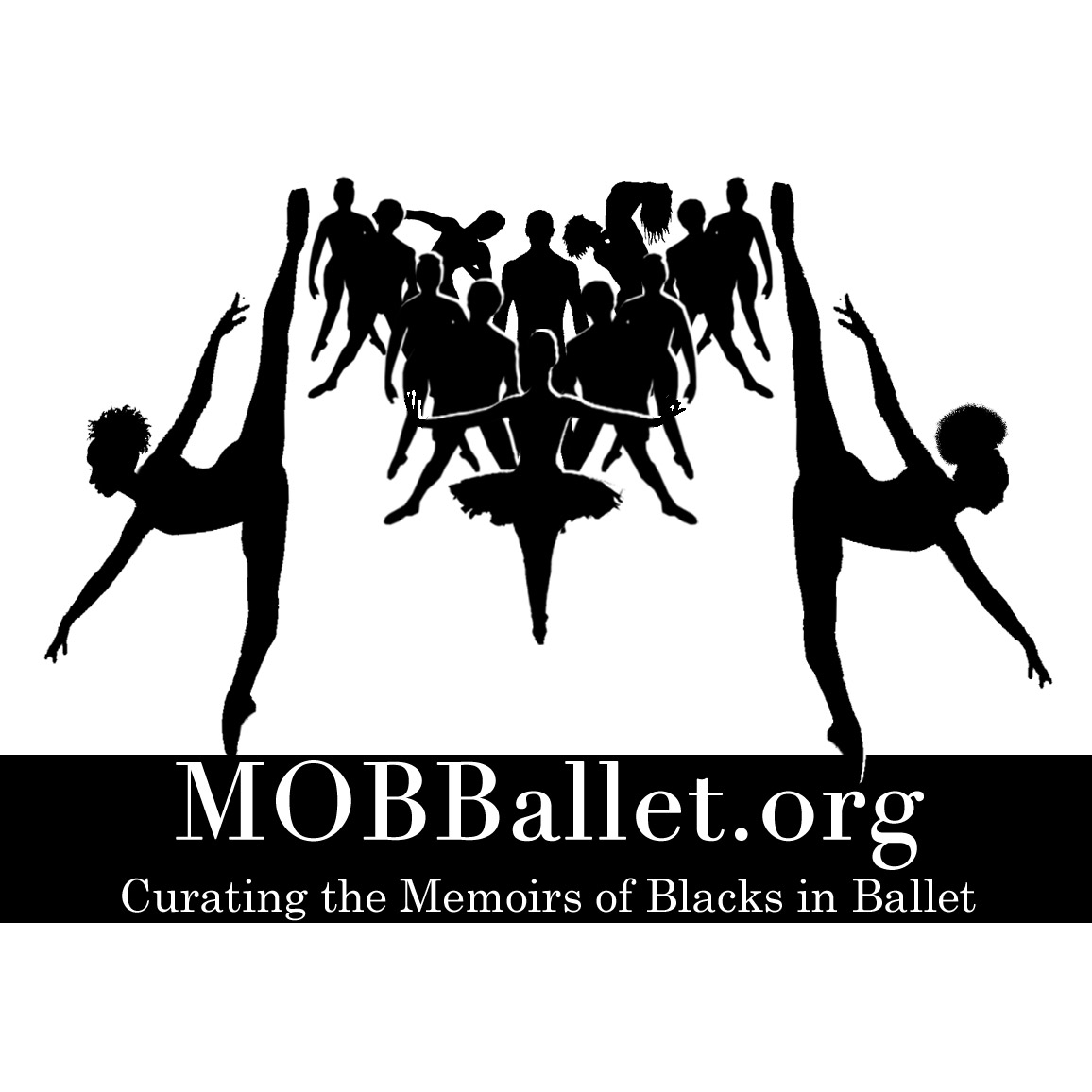About This Orbit: Betty Nichols
Betty Nichols, a groundbreaking alumna from SAB’s early years, was by all accounts the first Black student to seek enrollment at SAB. In a 1983 interview with Ballet Review, she recalled entering the school on April 17, 1944:
“I knocked on the door and presented myself. I thought there was a considerable surprise, but the door was opened and that was it.”
She went on to perform with Ballet Society, the immediate precursor to New York City Ballet, and witnessed the creation of The Four Temperaments in SAB’s studios. At that time, Ms. Nichols told Ballet Review, “The whole period was astounding. We had the chance to watch rehearsal, watch the creation. We had direct contact with these people. It was not a big major company. It was like a family.”

Ms. Nichols embarked on what she referred to as a “cultural vacation” to Europe in 1949 and ended up staying, dancing with Merce Cunningham and Roland Petit, acting in theater, and in 1951 marrying Jacques Schibler.
Ms. Nichols passed away in 2010, but her barrier-breaking story continues to inspire and remind us of all the work we still need to do to combat inequality and exclusivity within our organization and industry.
Source:
Betty Nichols, SAB Trailblazer
Todd Bolender

During 1946-1948, Betty Nichols danced in Ballet Society. In 1947, she was featured in Todd Bolender’s Zodiac, with designs by Esteban Francés.
Source:
Betty Nichols – Black History Month in Dance, Alastair Macaulay
Lew Christensen

Because Betty Nichols attended the School of American Ballet and subsequently joined Ballet Society, she was given the opportunity to perform in Lew Christensen’s Blackface. This ballet was a minstrel-themed production created for Ballet Society in 1947. Nichols originated this role in addition to her role in Todd Bolender’s Zodiac.
Sources:
Betty Nichols – Black History Month in Dance, Alastair Macaulay
Antony Tudor
Following the production, Tudor and Nichols maintained a friendship.
Sources:
St. Louis Woman, Playbill
Betty Nichols – Black History Month in Dance, Alastair Macaulay
Carmen Jones
 Betty Nichols performed alongside several members of New York’s Black ballet community in Carmen Jones on Broadway. Her co-stars included Al Bledger (American Negro Ballet); Valerie Black (ANB, Negro Unit of Ballet Theatre); Mabel Hart (Negro Unit); Evelyn Pilcher (ANB, Negro Unit, Katherine Dunham Company); Edith Ross (ANB, Negro Unit, Dunham Company); and Dorothy Williams (ANB, Negro Unit). They worked with Eugene Loring, choreographer of the production.
Betty Nichols performed alongside several members of New York’s Black ballet community in Carmen Jones on Broadway. Her co-stars included Al Bledger (American Negro Ballet); Valerie Black (ANB, Negro Unit of Ballet Theatre); Mabel Hart (Negro Unit); Evelyn Pilcher (ANB, Negro Unit, Katherine Dunham Company); Edith Ross (ANB, Negro Unit, Dunham Company); and Dorothy Williams (ANB, Negro Unit). They worked with Eugene Loring, choreographer of the production.
Source:
Talley Beatty

Betty Nichols and Talley Beatty worked together in several productions, the first being in Lew Christensen’s Blackface for Ballet Society in 1947; the duo originated their roles in their ballet. The following year, they both performed as ensemble dancers in Inside U.S.A. on Broadway.
Sources:
Inside U.S.A., Playbill
Timeline: 1947, MoBBallet
Talley Beatty and Betty Nichols in Lew Christensen’s Blackface, New York Public Library
Betty Nichols – Black History Month in Dance, Alastair Macaulay
Inside U.S.A.
 In Inside U.S.A., a Broadway production running from 1948 to 1949, Betty Nichols performed alongside actors like Jack Haley and Beatrice Lillie as well as well-known American dancer Valerie Bettis.
In Inside U.S.A., a Broadway production running from 1948 to 1949, Betty Nichols performed alongside actors like Jack Haley and Beatrice Lillie as well as well-known American dancer Valerie Bettis.
Source:
Roland Petit
In 1949, Betty Nichols embarked on a three-month trip to Europe, referred to as a “cultural vacation,” with her savings from performing on Broadway. While in Paris, Nichols danced for Roland Petit as a member of Les Ballets de Paris.
Source:
Betty Nichols – Black History Month in Dance, Alastair Macaulay
Merce Cunningham
Merce Cunningham and John Cage embarked on an extended trip to Europe in the summer of 1949. During their trip, they received an invitation to give a concert at Jean Hélion‘s studio in Paris. After receiving this invitation, Merce Cunningham asked Tanaquil LeClerq and Betty Nichols—members of Balanchine’s Ballet Society vacationing in Paris—to work with him. The two dancers danced in Cunningham’s Effusions avant l’heure, a highly publicized concert with an audience that included Alice B. Toklas and Alberto Giacometti.
Source:
Betty Nichols – Black History Month in Dance, Alastair Macaulay
Tanaquil Le Clercq
Betty Nichols was the first Black dancer at School of American Ballet in 1943, before Arthur Mitchell was discovered by Kirstein. She expressed that she “thought there was considerable surprise, but the door was opened and that was it.” In 1946, Nichols became a member of Balanchine’s Ballet Society, an early iteration of NYCB, and performed in Blackface with Talley Beatty, another Black dancer at Ballet Society. She gained recognition through Ballet Society and became friends with Tanaquil (Tanny) Le Clercq, a beautiful French ballet dancer. Nichols thought highly of Le Clercq; she said “Tanny had been fantastic in Ballet Society…something original” and used to say to her “Kid, you’re great.”
In 1949, Nichols “decided that [she] was going to take every penny out of the bank and go on a three-month cultural vacation to Europe.” Her original companions, Hilda and Ana, were both unable to go, and as soon as Le Clercq heard, she called and said “Betty, can I take Ana’s place?” Thus, Nichols and Le Clercq embarked on a trip to Europe together.
When they were in Paris, Nichols says that she and Le Clercq were walking on the pave of St. Chapelle when they heard “Betty! Tanny!” It was Merce Cunningham and John Cage, who said “We’re going to have a recital. You’ve got to do it with us.” Nichols knew Cunningham from SAB, and Le Clercq had danced Cunningham’s Seasons at Ballet Society. In this way, the two ballerinas danced a trio with Cunningham, after which Nichols stayed in Paris, while Le Clercq returned to America on her mother’s insistence.
Source:
A Conversation with Betty Nichols, Ballet Review
Victoria Merengwa
Neenah Young
Nicole Young

Madeline Crawford

